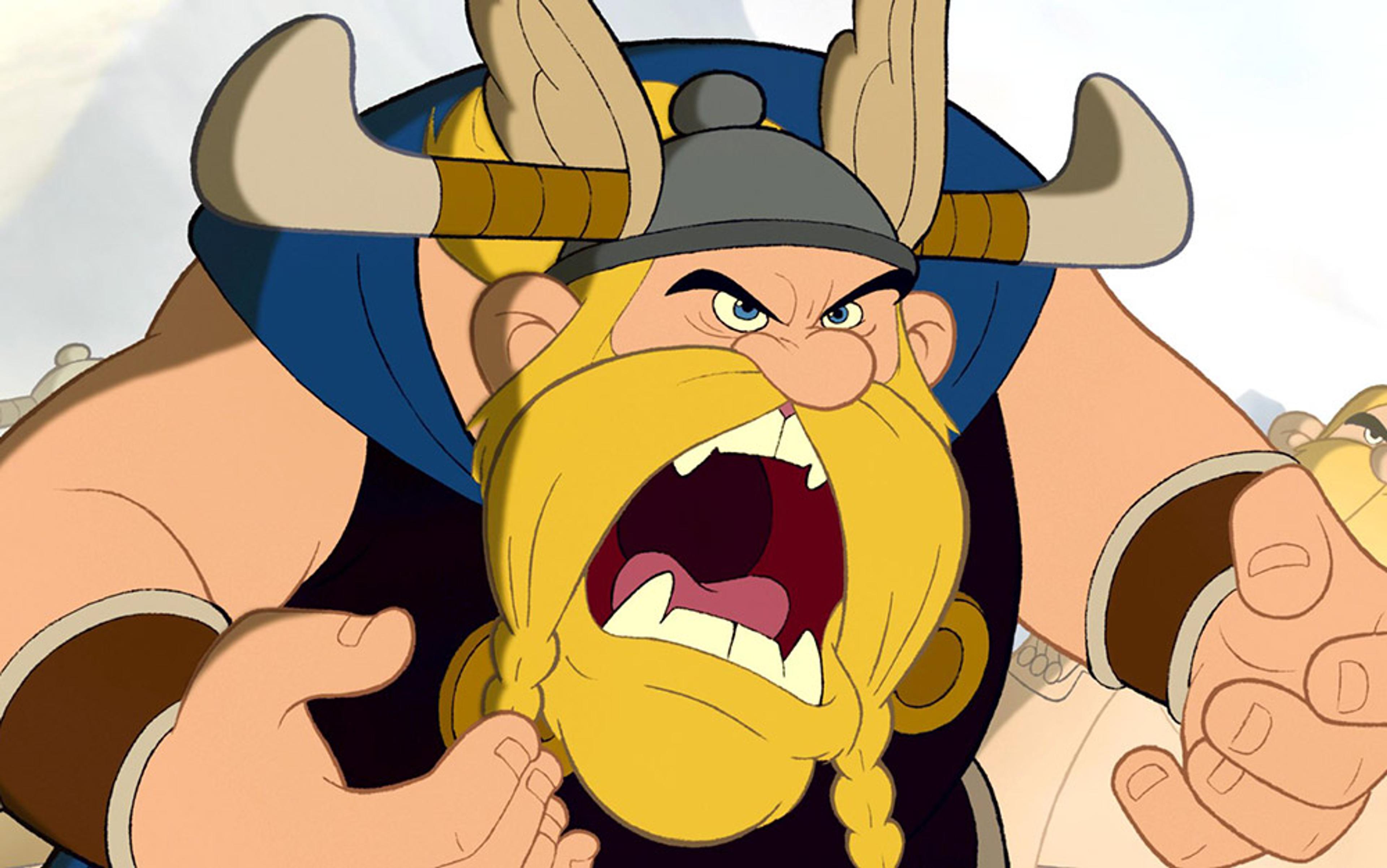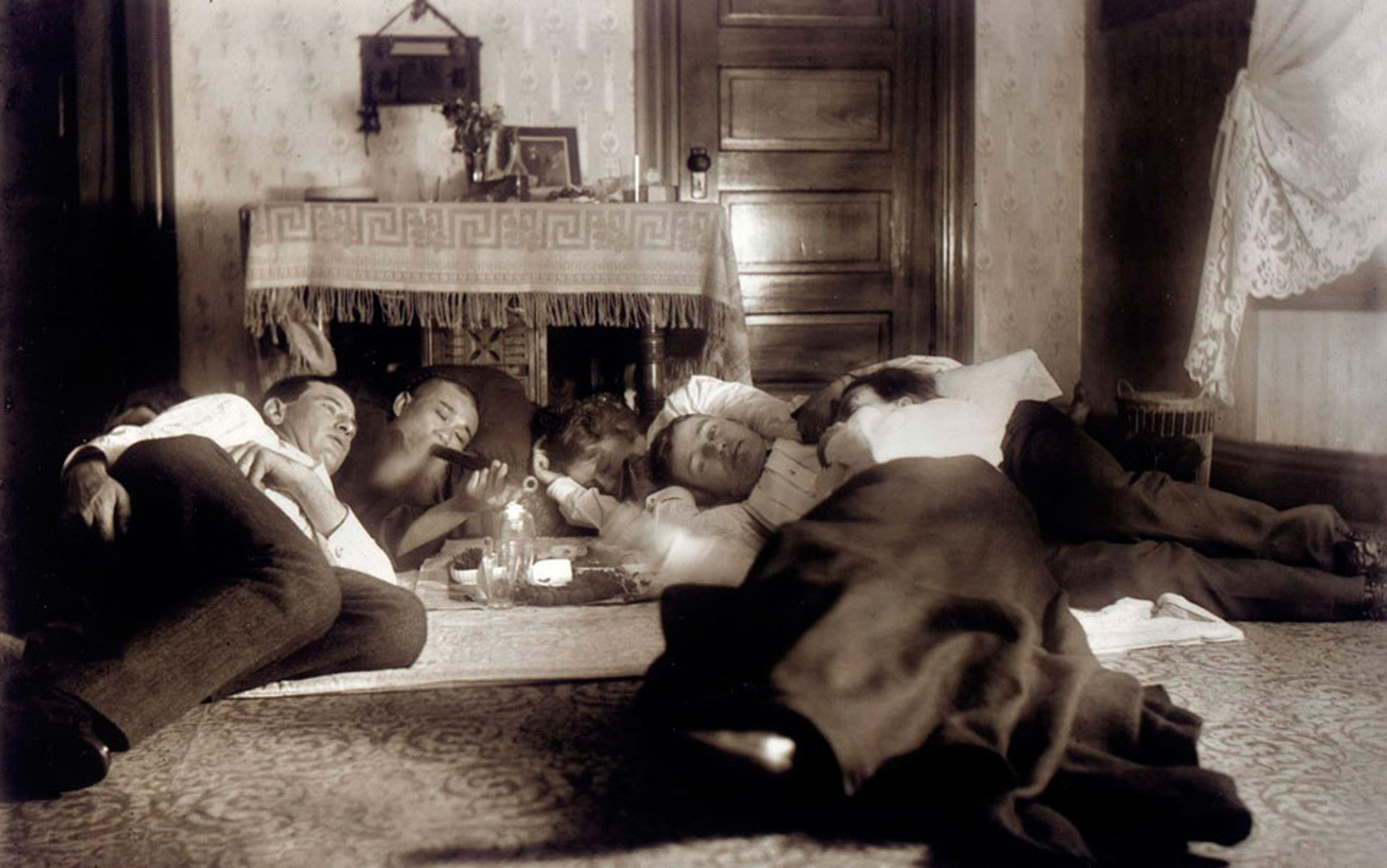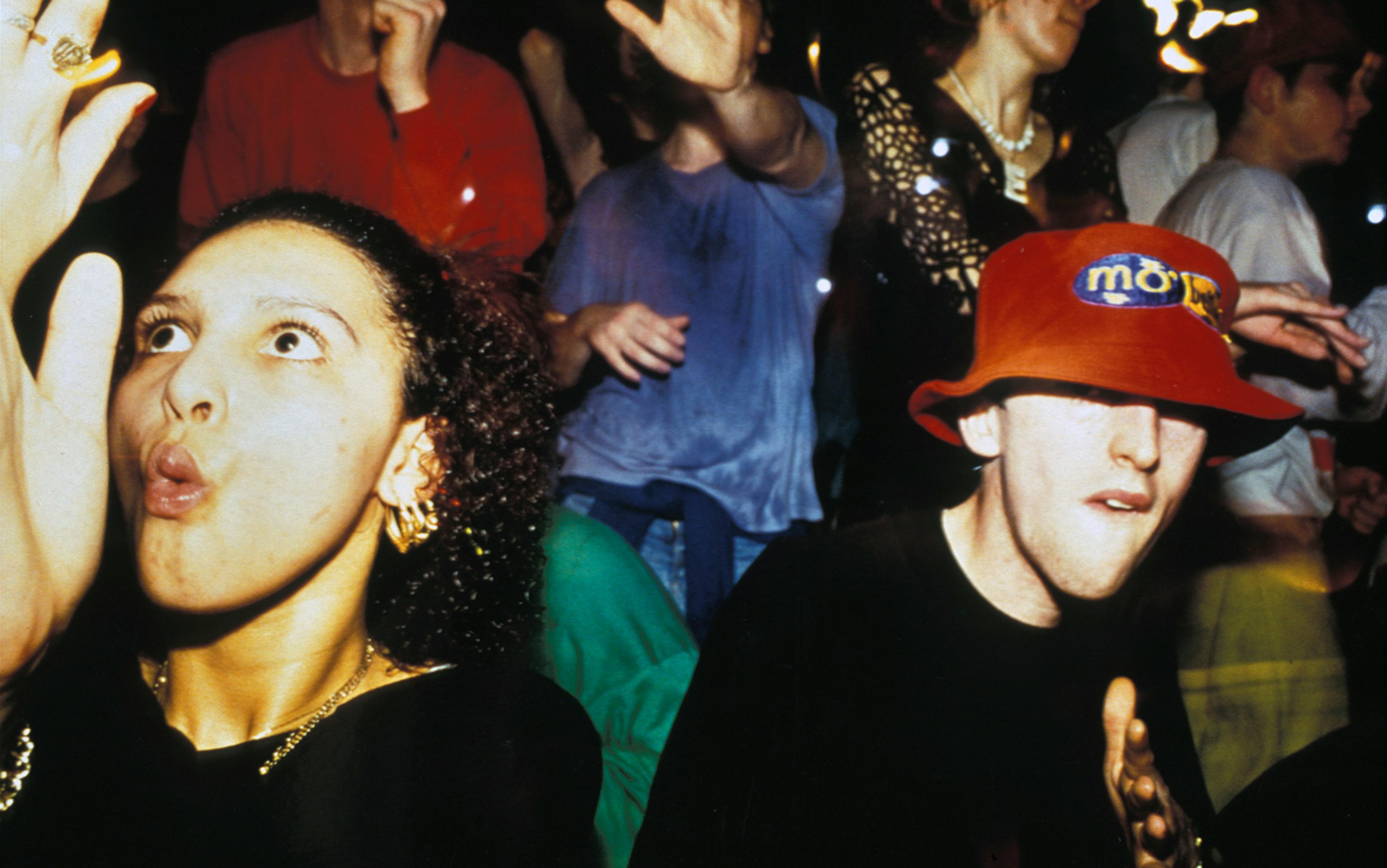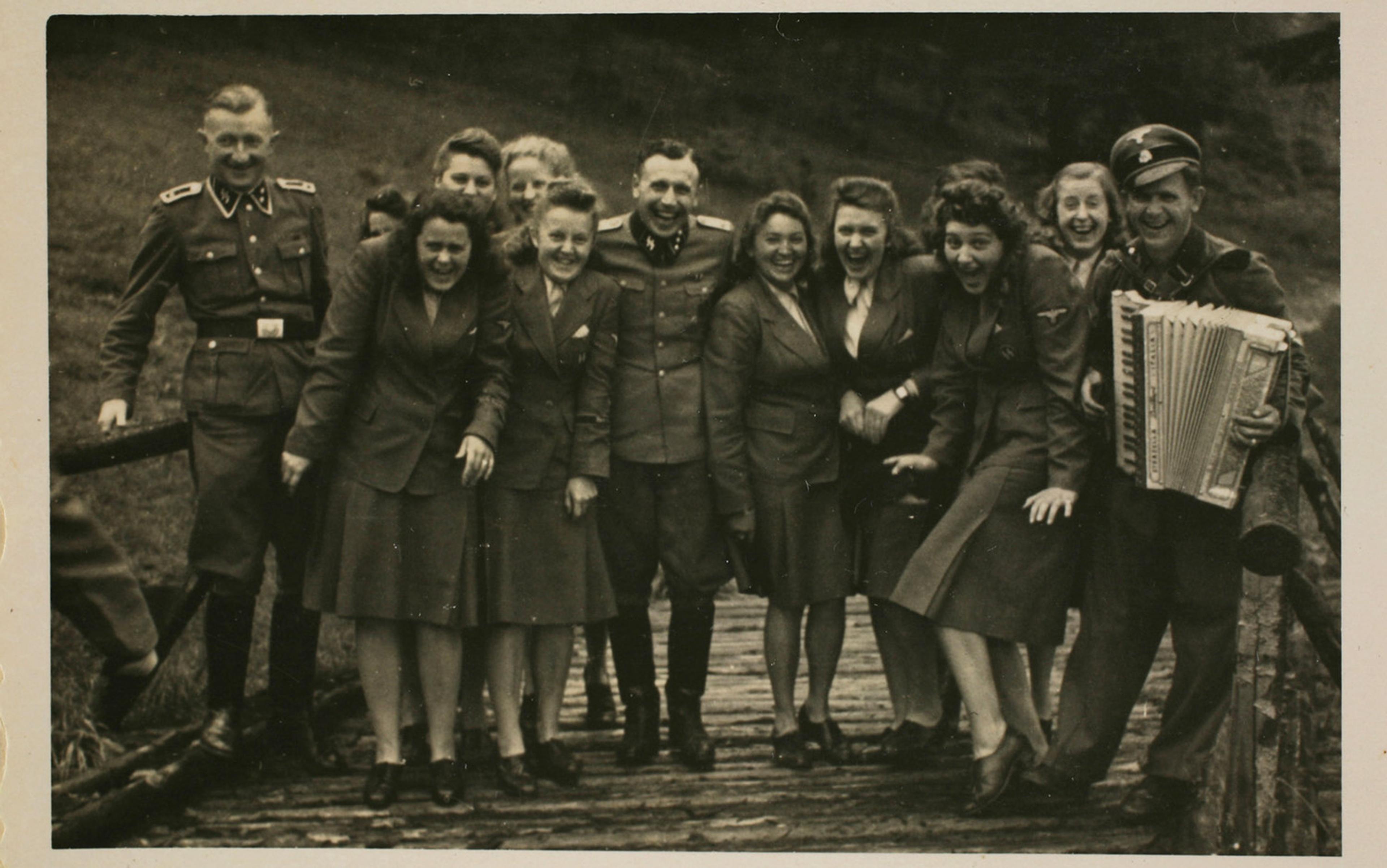‘All of Gaul is divided into three parts,’ wrote Julius Caesar at the start of his Gallic Wars. ‘No, four,’ corrected one author writing slightly later, ‘for one small village of indomitable Gauls still holds out against the Roman invaders.’ It was, of course, the French comic-book hero Asterix’s unnamed Breton village. The secret of the success of Asterix and his fellow villagers was their superhuman strength – that is, when their druid was willing to make them some of his secret potion. One gulp made Asterix’s Gauls invincible, irresistible in attack and extraordinary in defence. The only thing the potion could not cure was the village bard, Cacophonix, whose terrible voice alone was immune to the magic drug of Getafix, the village’s druid and superchemist.
Having grown up reading the Asterix books, I wondered about supplements that turned normal soldiers into heroes. Valour, bravery and virtue were all prized characteristics in the ancient texts that captivated me. In fact, in Greek and Latin, the words for courage (‘ἀνδρεία’ and ‘virtus’) derive from the word for man (‘ἀνδρὸς’ and ‘vir’). Being a man in the classical world meant being brave. Heroes such as Hector, Ajax, Agamemnon and Odysseus relied on their wits, muscles and character alone. Alexander the Great, Julius Caesar and Augustus likewise took difficult decisions, earning the respect of both their lieutenants and their foot-soldiers.
Further east, Kings of Persia presented themselves as just and brave rulers. In China, the philosophy of Mengzi (Mencius) taught men to consider personal bravery as an essential part of a purposeful life. Being strong meant being blessed by the gods – or even being part-divine, as was the case with Herakles, son of Zeus, or Achilles, son of the nymph Thetis. Ancient heroes sometimes turned to substances in order to alter their moods, or their minds. In the Odyssey, for example, Odysseus and his men find themselves in the land of the Lotus Eaters, which is populated by ‘men who make food of flowers’. The Lotus Eaters are extraordinarily relaxed. Odysseus’s scouts sink into repose as soon as they taste the ‘honeyed fruit’ of the lotus flower, which makes Odysseus’s men so deeply indolent that they refuse to return to their own camp. Resolving not to move, they ignore all orders and give up any thought of returning home.
Ancient China, the Arabic-speaking world and Europe all showed deep interest in the remedial and medicinal qualities of plants and seeds. For example, cinnamon was used in treatments of the heart, stomach and head in China, Persia and the Eastern Mediterranean, where it was prescribed by Dioscorides 2,000 years ago as being helpful in establishing regular cycles of menstruation. Cinnamon was also prescribed in medieval medical manuals as helping ‘the man whose head is heavy and stuffed’ with mucus. Later pharmacy books produced in Spain outlined at length how useful nutmeg oil was as a treatment for diarrhoea and vomiting, as well as fighting the common cold, and also reported that cardamom oil soothed the intestines and helped reduce flatulence.
The list of uses of spices and herbs is a long one. In the eighth century, Charlemagne ordered the large-scale cultivation of mallow after becoming convinced of its healing powers when it came to battlefield wounds. Some ancient medical research extended beyond the treatment of injuries into more adventurous pursuits. An Arabic manual written in the Middle Ages contains a chapter entitled ‘Prescriptions for Increasing the Dimensions of Small Members and for Making them Splendid’. It suggests rubbing a mixture of honey and ginger onto the private parts. The medical manual promised an effect so powerful and productive of such pleasure that the man’s sexual partner would ‘object to him getting off her again’.
Roughly contemporary to the Homeric epics are the Sanskrit Rig Vedas. More than 3,000 years old, they espouse cannabis as ‘a source of happiness’, ‘a liberator’ from anxiety, and ‘a joy-giver’, such that a guardian angel was said to live within its leaves. Ancient Chinese texts that mention hemp say nothing about the effects of cannabis – until the first century BC, when one text, the Pen Ts’ao Ching, notes that ‘if taken in excess [the fruit of the hemp] will produce hallucinations (literally ‘seeing devils’). If taken over a long term, it makes one communicate with spirits and lightens one’s body.’
The use of cannabis as an intoxicant was known in India and Iran 3,000 years ago, and became so widespread in the Middle East that some practitioners warned of the long-term effect of regular usage. Not all listened. In the late 11th century, young men flocked to a charismatic leader named Hasan i-Saban. Marco Polo referred to i-Saban as ‘the old man of the mountain’. According to the Venetian traveller, he gave his followers copious amounts of hashish (literally, ‘grass’ in Arabic). He also supplied them with sensuous women, and – in return – they murdered Hasan’s political rivals. His followers became known as the Hashishiyans, lending their name to today’s assassins.
he ‘was quarrelsome and fought with one of the wooden pillars of the porch until he had little skin upon the knuckles of the fingers’
Importantly, cannabis is not a stimulant. That means it is highly unlikely that cannabis served as the key to the assassins’ success designing and carrying out brilliantly planned and daring strategic operations. The effects of cannabis are more likely to be stupefying. That is why one sultan of Syria in the 14th century ordered that all cannabis plants be uprooted and destroyed, and that those who ate hashish should have their teeth pulled out as a warning about how the mellifluous effects ultimately rendered able-bodied men useless.
In short, cannabis usage was hardly likely to improve performance in battle. Take the case of Thomas Bowery, a 17th-century English merchant sailor. In India, he and his friends bought a pint of ‘Bangha’, a cannabis-infused drink. One ‘sat himself down upon the floor and wept bitterly all afternoon’; another, ‘terrified with fear… put his head in a great jar and continued in that posture for four hours or more’; ‘four or five lay upon the carpets highly complimenting each other in high terms’, while another ‘was quarrelsome and fought with one of the wooden pillars of the porch until he had little skin upon the knuckles of the fingers’.
Such effects of drug use were well known. They did not lend themselves to warfare, in contrast to the exceptional situation of Asterix’s (fictional) little village, and its druid chemist, in northern Gaul.
The world of the Vikings was more cosmopolitan and dangerous. Arabic and medieval Greek accounts make clear the Vikings’ extensive activity and engagement with societies around the Black Sea and the Islamic world between 800-1000 AD. The Viking way combined elements of the street gang with that of the organised crime cartels.
First, the Vikings looked scary: ‘from the tips of his toes to his neck, each man is tattooed in dark green, with designs and so forth’, wrote a 10th-century Arabic writer. The same writer noted that Scandinavians always carried ‘an axe, a sword and a knife’. They behaved as hardened criminals, never trusting each other and showing no hesitation to steal or kill anyone, even one another. Another Arabic commentary noted that the Vikings ‘never go off alone to relieve themselves, but… with three companions to guard them, sword in hand, for they have little trust in each other.’ These were tough men for tough times.
The Vikings – like later successful conquerors such as the Mongols – revelled in the fear that their very names struck into the hearts of men. Like the Mongols, the Vikings meant to terrify, and this fear gave them an advantage. As modern sportsmen understand, scared and nervous opponents are easier to defeat than confident, strident ones. Also like the Mongols, the Vikings liked to present themselves as invincible, as imminent victors. The self-presentation helped both groups establish great empires. For the Vikings, that meant not only control of the North Sea and the British Isles, and a small North America outpost, but also vast lands to the east. Ambitious Vikings headed south along the Volga, Dnieper and Dniester river systems. There, they made fat profits from trade, protection rackets and human trafficking. In due course, they founded the cities of Kiev, Novgorod and Chernigov. Ultimately, these cities wove together to become important lineaments of the Russian state.
Neither fire nor sword had any effect on them. This was what ‘Berserkergang’ was
Acumen, hustle and fear helped the Vikings acquire their eastern assets and interests, but they also relied on stimulants that made them seem – and feel – invincible. Scandinavian warriors ingested a potent mixture that made them seem superhuman. Old Norse literature talks of men entering a state of altered consciousness that made them go ‘berserk’. The word has entered common usage, and is still used to describe individuals, or groups on the rampage.
The term ‘berserk’, however, simply describes an item of clothing – a bearskin – rather than a specific act or behaviour. Viking men wore bearskins to show off their hunting prowess, to evoke the strength of a bear, and to win the protection of Odin, the Norse God of War. However, when it came to battle, it was not the Viking fashion sense that was important, as the ninth-century Haraldskvæði (literally, ‘The Deeds of Harald’) makes clear. The toughest, most terrifying warriors carried ‘bloody shields’ into battle, while their spears turned ‘red with blood’ as soon as they made contact with the enemy. They formed a closed group, fighting with such ferocious intensity that ‘the prince in his wisdom would put trust in the men who would hack their way through the shields of their opponents’. These men, the most trusted warriors, fought with apparent superhuman strength in battle.
A 13th-century source puts it clearly: ‘men rushed forwards without armour. They were as mad as dogs or wolves, biting their shields as they advanced. They were strong as bears or wild oxen, and killed people with a single blow. Neither fire nor sword had any effect on them. This was what “Berserkergang” was.’ This was going ‘berserk’.
Scholars used to think that large quantities of alcohol contributed to such astonishing scenes. Perhaps, scholars speculated, a change to the regular fermentation process, or an additional form of hyper-arousal that linked to post-traumatic stress disorder, made possible the Vikings’ ‘berserkergangs’. Eye-witnesses clearly thought that something had elevated these warriors to a trance-like state. They were most likely right. Almost certainly, the superhuman strength and focus was the result of ingestion of hallucinogenic mushrooms found in Russia, specifically of the amanita muscaria – whose distinctive red cap and white dots often features in Disney movies. They are most familiar, however, as the suburban garden decorations with a gnome sitting on top.
These poisonous fly agaric mushrooms, when parboiled, produce powerful psychoactive effects, including delirium, exhilaration and hallucination. The Vikings learned of the amanita muscaria in their travels along the Russian river systems. Local shamans used diluted amounts in tribal rituals, which were known as early as the time of Herodotus. He talks of the inhabitants living north of the Black Sea as being whipped into a state of euphoria by a smoke ‘that no Greek vapour-bath can surpass’ and being ‘transported’ to another plane as a result, one that induced them to shout manically. The Vikings would have witnessed this, and learnt from it. Here was an almost precise equivalent to the secret of Asterix’s village: a natural ingredient that needed careful preparation by someone with druidic, semi-religious powers. It could kill if not properly prepared, but could give extraordinary powers – or the impression of extraordinary powers – if handled properly.
As new Russian towns and cities flourished, Viking contact with the native peoples in what is now Russia dwindled. Urban life replaced the thuggish, winner-takes-all existence of the past. New elites emerged and were keener to enjoy the fine things in life than to ingest potions prepared by local shamans from the nomad world. Being civilised meant dropping the habits of indigenous peoples in favour of more refined tastes – such as Christianity, law and order, and militias that were ordered and organised, rather than chaotic and euphoric.
Nicknamed ‘Panzer chokolade’, the Nazis handed out pervitin in huge quantities
Of course, the ‘recreational’ drug trade grew into a major component of global exchange in the 19th century, especially when the British shipped opium to China, to the despair of its rulers. It was with the Second World War that narcotics began to play a major role in warfare. German pharmaceutical companies led the way in investigating the effects of synthetic substances and their commercial application – especially with regards to Hitler’s well-funded army, the Wehrmacht.
The Germans were, in particular, interested in pervitin, a substance chemically similar to crystal meth. The pharmaceutical company Temmler in Berlin produced pervitin in industrial quantities, and it was one of the reasons behind the fearsome reputation and success of the German military at the start of the war. The effects of pervitin seemed to confirm theories of the Übermensch – the superman, or superhuman – first developed by Friedrich Nietzsche, whose theories had been embraced by the Nazi leadership in support of their representation of the German people (or rather, its ‘Aryan’ members) as a master race. Pervitin made frontline soldiers feel like supermen. Nicknamed ‘Panzer chokolade’ (Panzer chocolate), the Nazis handed it out in huge quantities. In the space of three months in 1940 alone, they distributed some 35 million tablets of pervitin and Isophan (a similar product made by a different producer) to German troops. It seemed to be a wonder drug, producing feelings of heightened awareness, focusing concentration and encouraging risk-taking. A powerful stimulant, it also allowed men to function on little sleep.
Recent research by the German author Norman Ohler shows that the effects could be dramatic, especially on the eastern front where bitter cold of up to -30ºC and failing morale caused some men to ‘simply lie down in the snow’. Things changed dramatically when given a dose of pervitin: sprits improved, alertness spiked and confidence grew. By 1944-5, new variants were being produced, such as D-IX, an even more potent blend of cocaine, morphine and pervitin, tested on prisoners held at the Sachsenhausen concentration camp, and again administered to German troops in large quantities.
It was not just those on the front line whose faculties were boosted by stimulants. So too were those in Berlin, including Hitler himself. The Nazi leader habitually used Eukodal, a substance closely related to heroin. He also received shots of methamphetamine, testosterone and other opiates. Field Marshal Erwin Rommel consumed pervitin so regularly that he called it his ‘daily bread’. And it was not just the Germans who turned to drugs to boost performance: so did the British. General (later Field Marshal) Bernard Montgomery issued Benzedrine to his troops in North Africa on the eve of the battle of El Alamein – part of a programme that saw 72 million Benzedrine tablets being prescribed to British forces during the Second World War.
Use of drugs to improve military performance continued following the Second World War. Although large parts of the Soviet and US chemical development programmes have remained classified for the post-war period, it is clear that considerable attention has been paid to research into ‘supplements’ that can have a positive effect on members of the military. The US Air Force, for example, has administered dextroamphetamines to its pilots undertaking long missions, to improve their alertness and reduce fatigue. And of the US pilots who took part in Operation Desert Storm in 1991, 65 per cent used stimulants, with just over half reporting that they were either beneficial or essential to operations.
Not all experiences proved positive. Serious side-effects can include confusion and psychosis. Investigations into an exercise at the Tarnak Farms training camp in Afghanistan in April 2002 that left four Canadian servicemen dead and eight wounded as a result of friendly fire revealed that US F-16 pilots had been sanctioned to use Dexedrine. The development by the US Army of chemical stimulants has also not been without consequences: two soldiers died after being issued with Dimethylamine, a performance-enhancing drug banned by the World Anti-Doping Agency.
So extensive is the research into better, more focused combat forces that, for more than a decade, the US has supported a biochemical programme whose aims include finding ways to allow servicemen to function better in hostile environments, use less energy, and improve battlefield performance.
The production of stimulants for use by rebel and ISIS forces has soared and, with it, videotaped beheadings, mass executions and indiscriminate slaughter
Given the well-documented, widespread use of narcotics in modern warfare, it is no surprise to find ISIS also supplying soldiers with stimulants. In the fall of 2015, the largest drug bust in Lebanese history took place at Beirut airport when a Saudi prince tried to board a private jet that was about to fly to Ha’il, in northern Saudi Arabia. Two tons of Captagon were recovered – a drug whose use outside the Middle East is negligible, according to the United Nations Office on Drugs and Crime.
Originally developed in the 1960s, Captagon was designed to treat narcolepsy and attention-deficit disorder. It was banned in most countries because of its addictive nature. Captagon produces feelings of euphoria, a boost in energy and heightened awareness – as well as surging aggression levels, says Richard Rawson, co-director of the Integrated Substance Abuse Programme at the University of California, Los Angeles. A Reuters report from 2014 demonstrated just how widespread the use of drugs has become in Syria since the start of the civil war, and especially how production of stimulants for use by rebel and ISIS forces has soared. The fact that the levels of violence have risen, too – not only with videotaped beheadings, but also mass executions and indiscriminate slaughter – might not be entirely coincidental.
Most certainly, trying to become superhuman involves playing with fire. Attempting to be stronger, better, more focused and more brutal in conflict situations might be understandable. But as Getafix used to chide the villagers in northern France, performance-enhancing drugs are to be used only on special occasions, and only when all else has failed. Always trying to achieve military supremacy means losing the ability and willingness to negotiate, compromise or rely on (and develop) native wits. As Buddy, the evil genius in the movie The Incredibles puts it: when everyone’s super, no one is. Maybe it’s time to address a challenge more difficult than making temporary supersoldiers: making people better at peace.






